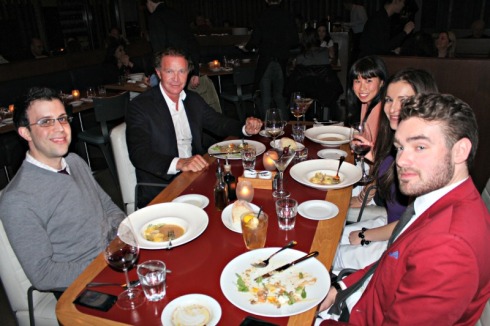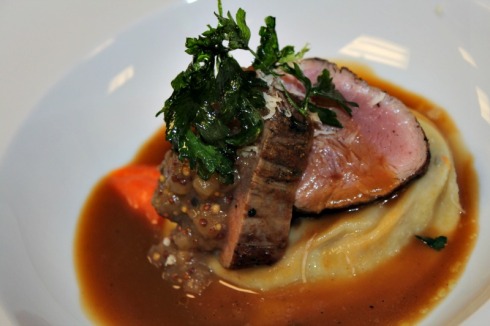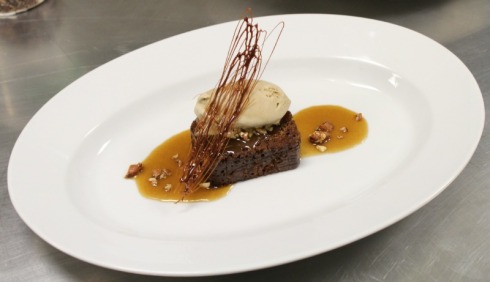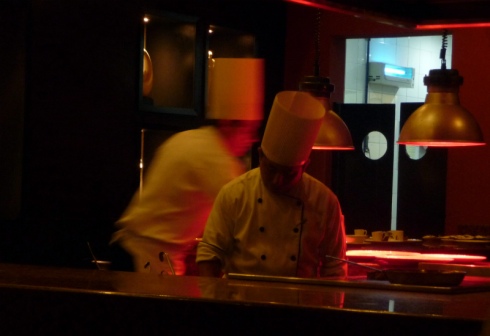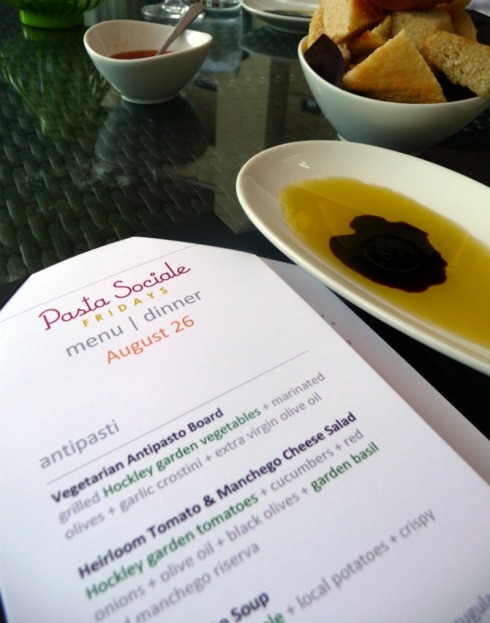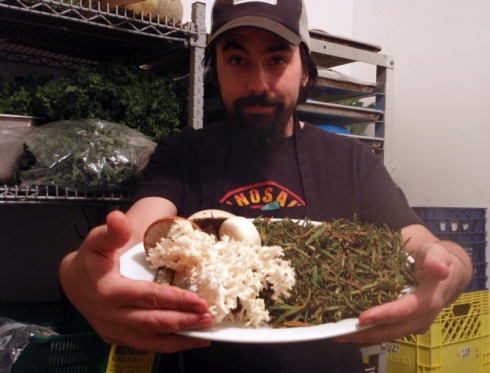
Last year, Jenny and I were invited to the S. Pellegrino Almost Famous Chef Competition’s Canada regionals in Toronto. The event brought together culinary students from schools all across the country, all vying for the chance to represent Canada at the Almost Famous Chef Competition final in Napa Valley, California. We loved the chance to see some of Canada’s next generation of chefs showing off their skills under pressure, and we were amazed by the dishes they produced for judging.
This year marks the 10th S. Pellegrino Almost Famous Chef Competition, and the Canadian regionals are coming up next Monday, January 30. We’ll have a rundown of all the action after the event. But in the meantime, we had the chance to chat with Cole Nicholson, a culinary student at George Brown College who’ll take part in the competition.
We were also given a great prize to give to one of our lucky readers: a $150 gift certificate to chef Susur Lee’s Toronto restaurant, Lee. Keep reading to find out how you can win. But first, check out my interview with Cole Nicholson.

How long have you been cooking?
I’ve been cooking for about three years now. I started working in a restaurant when I was 17 years old and I took the culinary management program at George Brown when I finished high school. I’m usually one of the youngest people in the kitchen, if not the youngest, so it makes it kind of fun and a lot more people are open to teaching me new things.
What first inspired you to get involved in the kitchen?
The high school that I went to was originally a trades high school when it was opened; it had professional auto shops, carpentry labs and a full production kitchen. Part of the curriculum was to take a trade class. I decided to take cooking because nothing else really interested me and I thought it would be a good life skill to have. I ended up taking it all through high school and I really learned a lot. In my grade 11 year, the school got a new cooking teacher. He was completely different from any other teacher at the school� – he was only 27 years old and this was his first teaching job. He was fresh out of the industry and was up on modern cooking techniques and styles. He made me realize that cooking could be cool. He changed a standard cooking class into something so much more; we learned how to make fresh tomato sauce, veal jus, homemade pasta and ravioli, even butchery. If not for him, I would have chosen a completely different career.
Why did you choose the culinary arts program at George Brown? How have the curriculum, instructors and interactions with others in Toronto’s food community helped you expand your skills in the kitchen?
When I first started researching culinary schools, George Brown really stood out to me because of the number of people that have graduated there and gone on to be successful. Almost every great kitchen in Toronto has someone that went there and I thought it was a great way to make connections. The teachers are amazing. Every one of them knows a lot and they are passionate about teaching. Many of them have great connections and are open to helping you with your career.
What cuisines and/or ingredients are you most passionate about?
I just got back from working and living in Italy for four months as part of my Italian program at George Brown. I worked in a great restaurant called Il Baluardo in the Piedmonte region of northern Italy. It was extreme culture shock at first, but being back home I miss everything about Italy. They have an amazing respect for food and ingredients and their lives revolve around their daily meals. I learned so much while in Italy and I came back to Canada with a lot of passion for Italian food and culture.
How would you define your cooking style?
I don’t really think I am old enough or experienced enough to really have my own “style” of cooking yet. I love to learn new techniques and try to figure out new ways of preparing something. My favourite styles to learn from are chefs who use a lot of old school techniques and flavours in their cooking, but done in a modern way to get the most out of their product.
What current food trends are you most excited about?
The trend that excites me most right now is chefs having relations with farmers and purveyors and really promoting them in their restaurants and on their menus. I think this all really started with Thomas Keller at the French Laundry, but many other great chefs around the world and in Toronto have gone on to do the same.
How are you preparing for the S. Pellegrino Almost Famous Chef Competition?
I was first notified that I would be competing in the competition by my teacher back when I was in Italy. I was notified in October and had to have my menu submitted in November. I had no way of practicing while in Italy, so I did a lot of research on seasonal products of Canada at the time of the competition. I put a menu together using seasonal products that I find interesting and challenging to work with. I was a little homesick at the time, so my dish is pretty Canadian. When I got back to Canada a few weeks ago, I started practicing at the school and the dish came together. I’ve been practicing two or three days a week and refining the dish.
Have you heard much about previous years’ competitions to get a sense of what to expect and what’s worked for the competing chefs?
I had not really heard much about it until the student from George Brown (Jean-François Daigle) won the Canadian regional competition last year. His coach, who is now my coach, was one of my culinary instructors last year and I expressed interest to him in competing this year. One of the students in my program, Brian Cheng, competed two years ago and once he found out I would be competing he gave me a lot of helpful advice. He told me a lot of basic considerations to take into account when preparing the menu: proteins that I shouldn’t use, things the judges look for.
What are you hoping to do with your career once you’ve graduated from George Brown?
I really want to work in the U.S. I think that they have a lot to offer and I could learn a lot working there. Chefs there are combining some amazing skills and techniques with great products to produce some of the best food in the world. I have a list of places that I want to work at: The French Laundry in Napa Valley, Le Bernardin in New York City and Alinea in Chicago.
What chef would you most love to cook with?
If I could cook a meal with any chef, it would be Thomas Keller. I had the opportunity to meet him and hear him speak when he was in Toronto a few years ago. He completely changed my outlook on food. His whole approach to food and respect for ingredients and people is something to learn from. The French Laundry cookbook is like my bible, not for the recipes necessarily, but for the philosophy and wisdom. I had the opportunity to eat at his restaurant Per Se in New York City last year and it was a life changing experience. I knew after that meal what I wanted to do with my life.
WIN A $150 GIFT CERTIFICATE TO LEE RESTAURANT!
For a chance at this great prize, here’s what you need to do:
Click here to leave a comment, telling us about your top food experience. It could be a great restaurant meal you had, a food adventure like taking a cooking class in a foreign country, something amazing you cooked in your own kitchen, or a food memory from your childhood. The possibilities are endless. Whatever your favorite food experience is, we want to hear about it.
We’ll take all the comments we’ve received by 11:59 p.m. this Sunday, January 29, assign each a random number, and then choose a winner at random using random.org.
**You don’t have to live in Toronto to win, but the prize includes the restaurant gift certificate only (no travel expenses, etc), which means a winner from outside of the Greater Toronto Area must plan to be visiting Toronto in the near future to use the gift certificate.
Tags: Almost Famous Chef Competition, George Brown College, Susur Lee

